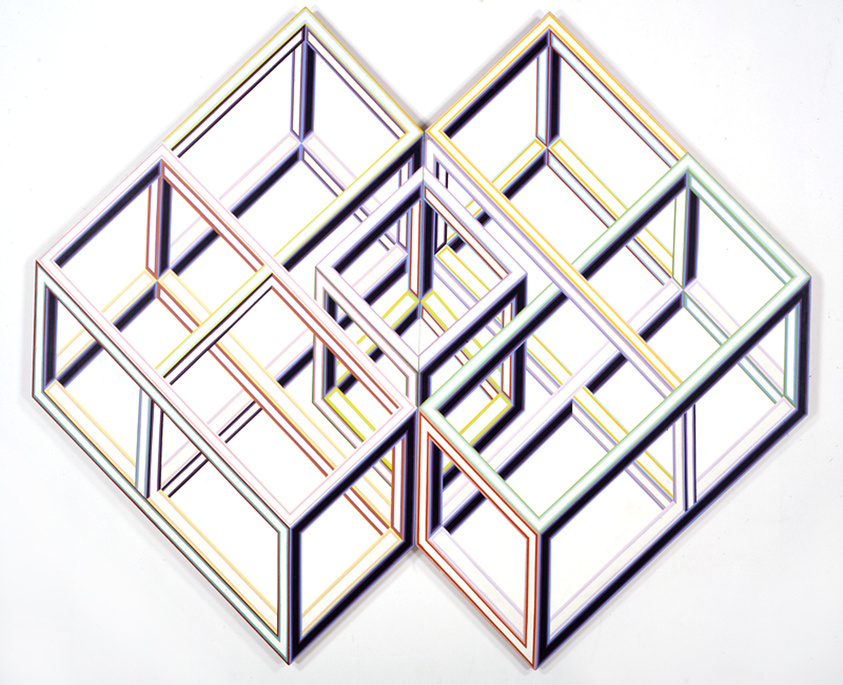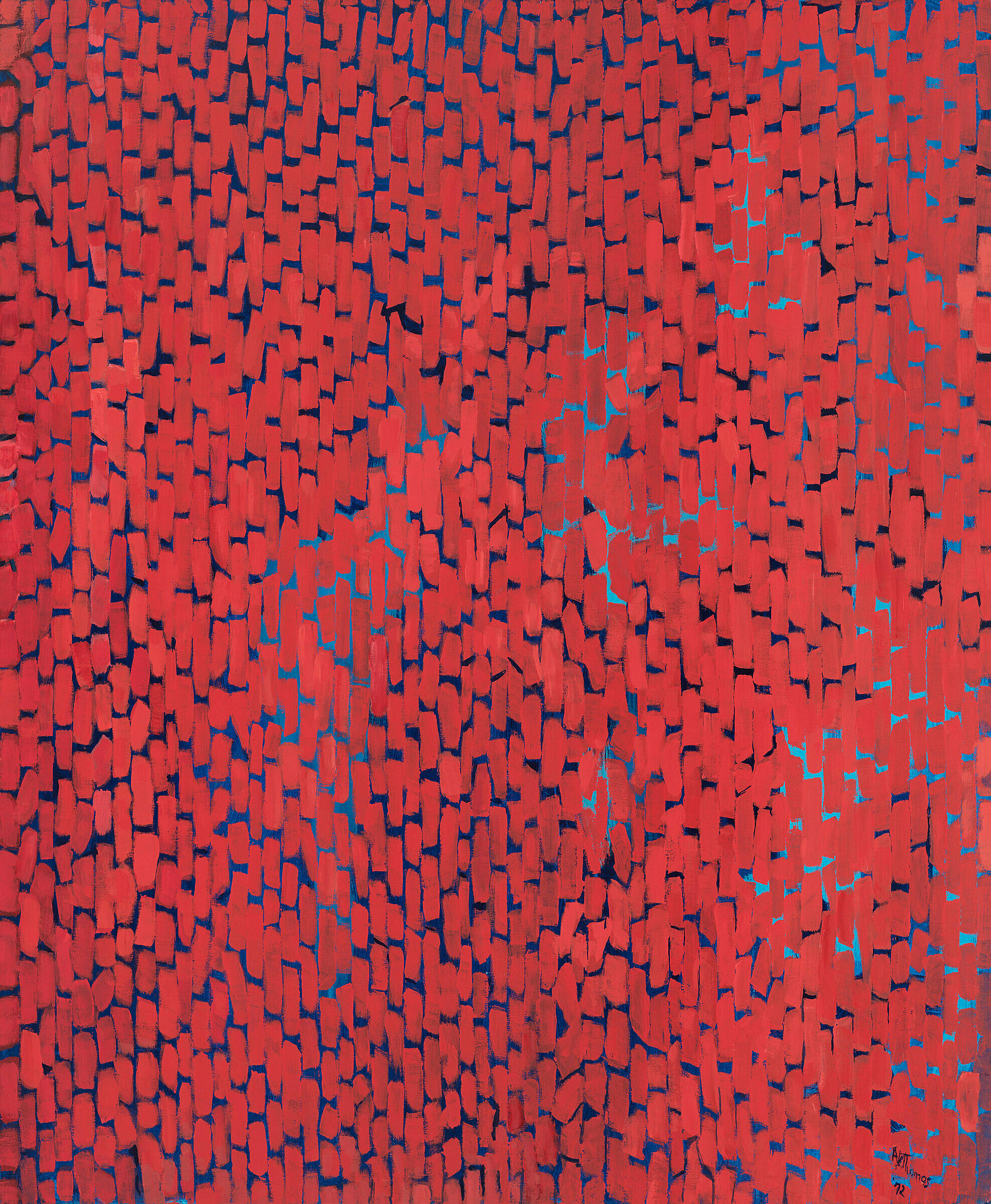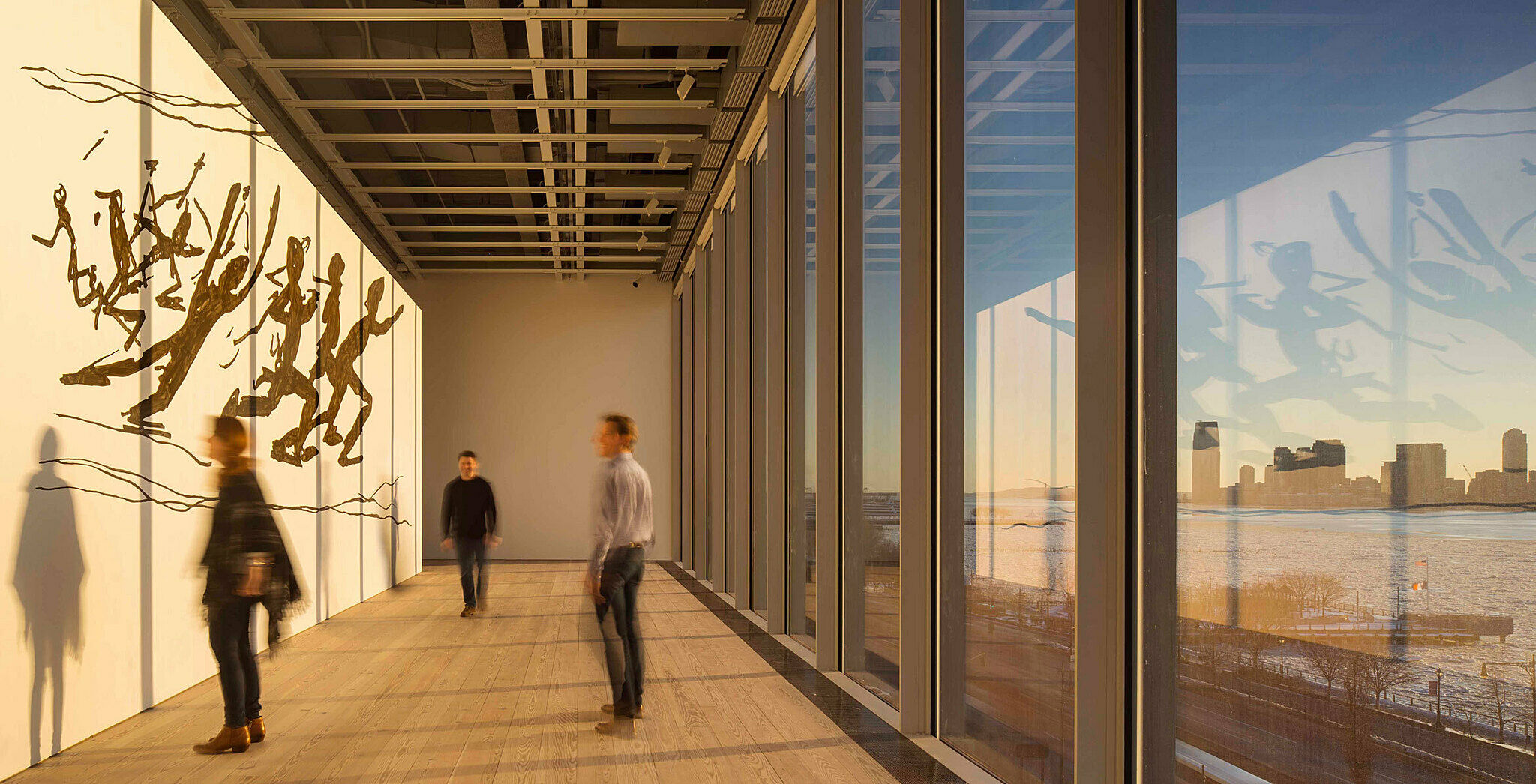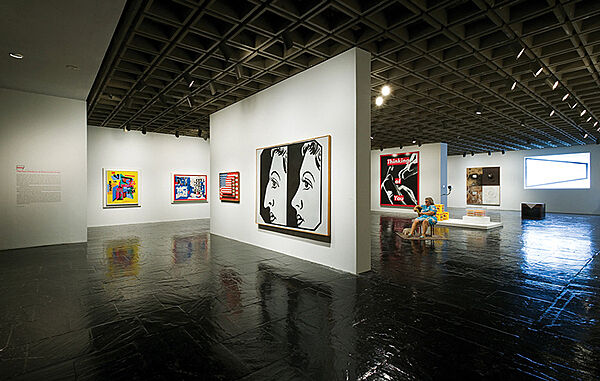Not on view
Date
1969
Classification
Paintings
Medium
Acrylic on shaped canvas
Dimensions
Overall (Irregular): 82 1/8 × 97in. (208.6 × 246.4 cm)
Accession number
69.74a-b
Credit line
Whitney Museum of American Art, New York; purchase, with funds from the Robert C. Scull Fund for Young Artists not in the Collection
Rights and reproductions
Courtesy the Estate of Al Loving and Garth Greenan Gallery, New York
API
artworks/2284
In 1969, three years after Alvin Loving had moved to New York City from the Midwest, he had a solo exhibition at the Whitney. Unlike other African American artists whose art focused on the racial politics of the era, Loving was an abstract artist whose works from this period, including Rational Irrationalism, were built upon strict yet simple geometric shapes, often hexagonal or cubic modules. Inspired by German Abstract Expressionist Hans Hoffmann (who taught Loving’s mentor from Michigan, Al Mullen), Loving concentrated on the tension between flatness and spatial illusionism. He explored this tension using a hard-edged geometric vocabulary related to Minimalism and Op art—as in Rational Irrationalism, which utilizes a strategic layering of cubic forms and juxtaposition of warm and cool colors to create an optical play of three-dimensionality on a flat support.



